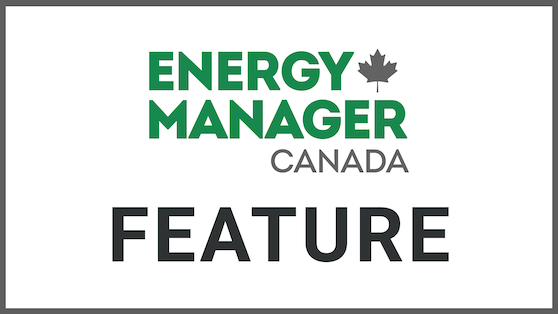
Features
News
Opportunities for better energy use and management in cannabis operations – IESO report
“Despite these challenges, opportunities to save energy—and reduce electricity costs for operators—exist for the indoor cannabis sector.”
October 20, 2021 By Anthony Capkun

October 20, 2021 – With the aim of helping cannabis operations, policy-makers and utilities better understand the energy requirements of the recreational cannabis sector—and find ways to manage increased demands on energy systems—Ontario’s Independent Electricity System Operator collaborated on the development of a new report “Energy management best practices for cannabis greenhouses and warehouses” (May 2021).
(Co-collaborators included the Centre for Energy Advancement through Technological Innovation [CEATI], along with utilities in two Canadian and three United States’ jurisdictions.)
In its report overview, IESO says standard energy management practices are challenging for the indoor cannabis sector for several reasons:
• It’s still a relatively new industry in many North American jurisdictions, including Ontario.
• Every facility and its growing needs is unique.
• While codes and standards do exist in some jurisdictions, there are no unifying standards or protocols for cannabis growers that offer a comprehensive guide to optimal equipment combinations or control strategies.
“Despite these challenges, opportunities to save energy—and reduce electricity costs for operators—exist for the indoor cannabis sector,” IESO affirms.
Commercial indoor cannabis facilities are separated into two camps—warehouses and greenhouses—both of which are energy-intensive. Warehouse facilities use only artificial light, while greenhouses use a combination of artificial lighting and sunlight.
Compared to greenhouses, warehouses can offer a higher degree of environmental control. Warehouse grow rooms, for example, are sealed from the outdoor environment and provide plants with artificial light, mechanical cooling and dehumidification.
The vast majority (90%) of indoor cannabis operations in Ontario are greenhouses, which also account for more of the total area for indoor cannabis production (65%).
Where is the energy spend?
While most indoor cannabis facilities use both natural gas and electricity, their electricity use is much higher. In 2019, Ontario cannabis facilities used 500,000 eMWh (equivalent Megawatt-hour) of electricity compared to 100,000 eMWh of natural gas.
With the exception of space heating, electricity is used for all end uses in both greenhouses and warehouses.
In greenhouses, lighting, space heating and ventilation are the biggest drivers of overall energy consumption (natural gas is primarily used for heating needs). Most greenhouses do not have mechanical dehumidification and, instead, use natural or passive ventilation to control humidity, so dehumidification’s impact on energy consumption is negligible.
Warehouses, on the other hand, consume more energy for lighting, space cooling and dehumidification. They require less energy for space heating, since they have higher internal heat gain. Unlike greenhouses, most of the heating load in warehouses is associated with reheating conditioned air for dehumidification.
The report concludes that both greenhouse and warehouse cannabis operations have the potential to conserve electricity and manage energy more efficiently.
1. Lighting is the greatest opportunity
High-pressure sodium lighting is still the standard in the cannabis sector. Given that lighting drives much of the electricity use in both kinds of cannabis production facilities, upgrading HPS to LED lighting presents the single-most significant energy-saving opportunity. This is true across all the regions studied, including Ontario.
2. Create a balanced system
Replacing HPS with LEDs in indoor cannabis facilities can, however, create offsetting electricity increases; although less electricity is required for lighting, less overall heat is transferred by the lighting. Thus, more heating is required.
In greenhouses: The reduced convective and radiative heat transfer from LED lights needs to be compensated for by the gas heating system. That means electricity savings occur, but gas consumption increases. However, overall energy consumption remains lower. Energy curtains also offer the greatest opportunity for natural gas savings in greenhouses.
In warehouses: These facilities have high internal heat gains and predominately meet dehumidification reheat load with electric heat. This means electricity savings from LED lighting are almost entirely offset by the need for electric heating, so there are virtually no material energy savings, unless a heat recovery system is in place.
3. Implementing additional measures as needed
Along with upgrading lights and taking into account interactive effects on the HVAC system, there are several additional energy-efficiency measures that may help to conserve energy in greenhouses and warehouses:
GREENHOUSES
• Variable frequency drives on supply and exhaust fans
• Condensing boilers
• Condensing unit heaters
• Energy curtains (natural gas savings)
WAREHOUSES
• Chillers (air-cooled and water-cooled)
• Dehumidifiers
• Direct-expansion unit gas heating
• Waterside economizers
To learn more, and to download the report and/or the summary, visit IESO’s Energy Efficiency Research page.
— With files from “Energy management best practices for cannabis greenhouses and warehouses”, IESO, May 2021.
Print this page